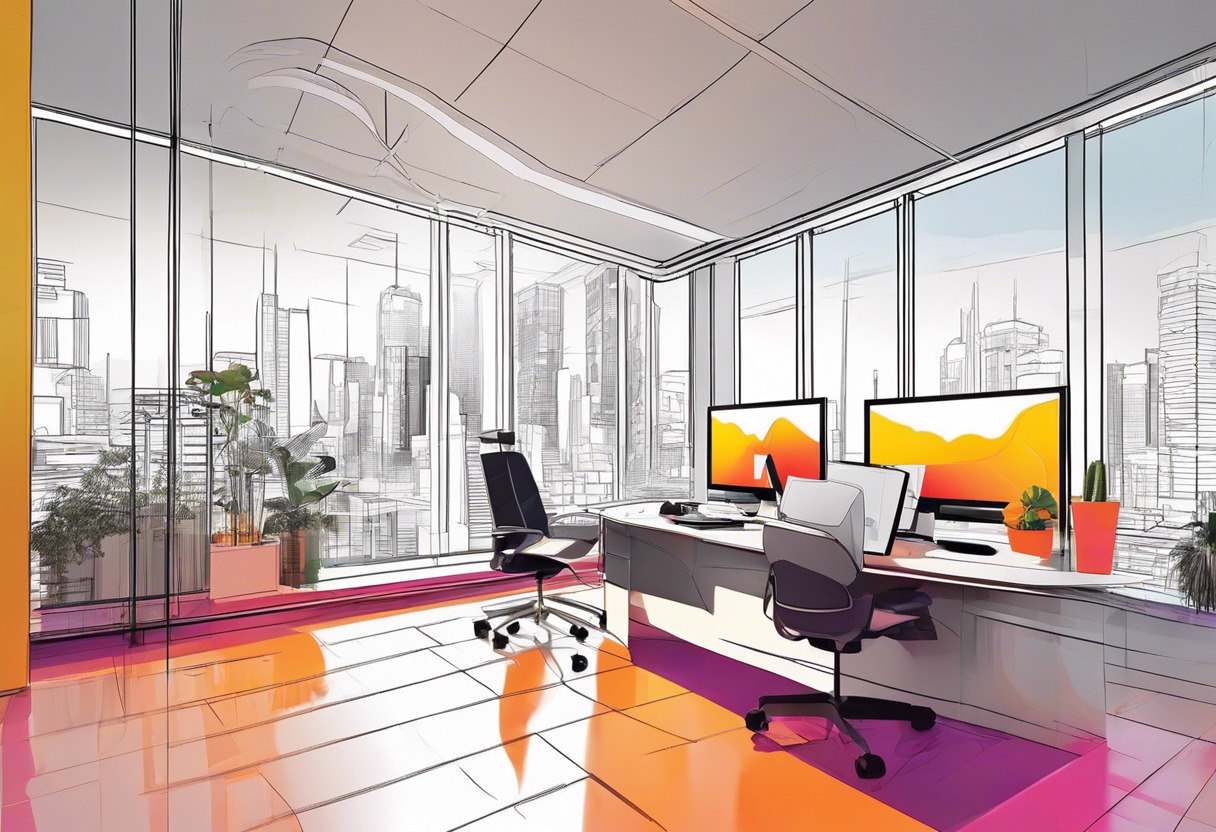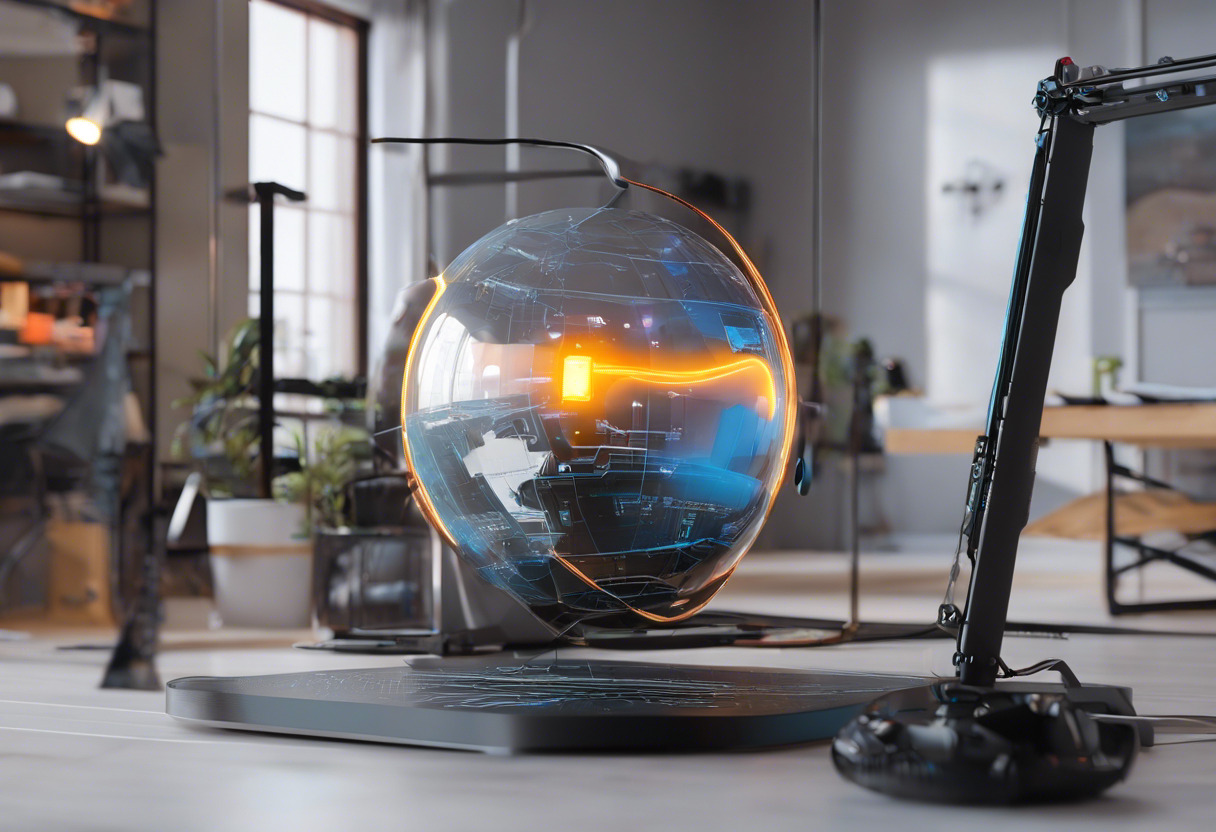For creators requiring rich 3D modeling and scanning features, Polycam provides a more comprehensive toolset. However, for applications necessitating superior object detection and tracking, even through solid objects, WiDAR emerges the superior.

Key Differences Between Polycam and WiDAR
- Polycam focuses on 3D scanning and modeling, while WiDAR is specialized in object detection and tracking.
- Polycam harnesses LiDAR technology for capturing, WiDAR employs multiple transmitting antennas.
- Polycam offers editing tools and advanced export options, WiDAR currently lacks these capabilities.
- Polycam supports wider device compatibility inclusive of Android, WiDAR currently operates on iPhone and iPad.
| Comparison | Polycam | WiDAR |
|---|---|---|
| Platform | iOS, Android, Web | iPhone, iPad |
| Scanning Technology | LiDAR Scanning, Photogrammetry, 360-degree panorama capture | 12 Antennas Imaging with Radio Signals, LiDAR scanning, Photogrammetry |
| Apps | Contractors, Interior Designers, Architects, VFX, Fillemaking, 3D Art, Scene Building | Missile or Space-debris Tracking, Vital-sign Monitoring, Firefighters’ Navigation, Indoor Localization, Hypersonic Platform Detection, Tracking |
| Individual Applications | 3D Models, Room Mode for Floor Plans, Furniture Placement, Video Making with various modes | Human Mobility Estimation, Indoor Localization |
| Device Support | iOS 15.2+, Android 8.0+ | iPhone 8 Plus onwards, iPads (3rd gen onwards) |
| Special Features | Support for drone mapping, community platform for sharing, exploring models | Uses radio signals for penetration through concrete, drywall, wood, and glass, can detect moving and stationary humans with WiFi |
What Is Polycam and Who’s It For?
Polycam, an AR-focused creation by Polycam Inc, is a versatile 3D scanning application for iOS, Android, and the web with an emphasis on practicality. Equipped with innovative features such as LiDAR scanning, photogrammetry, and 360-degree panorama capture, it serves an array of professionals, including contractors, interior designers, architects, VFX artists, and filmmakers.
Embedded with sophisticated technology like Apple’s Object Capture for photogrammetry processing and a new AI-based 360 Capture system, Polycam stands out as an all-inclusive application for 3D capture, collaborative editing, and drone mapping amongst others. Its competitive pricing and unique sharing features position it as an industry-leading tool.

Pros of Polycam
- LiDAR scanning and photogrammetry
- Allows users to view 3D models in Augmented Reality
- Provides content and user management tools
- Unlock advanced export formats with Pro edition subscription
Cons of Polycam
- Need of device with LiDAR sensor for generating LiDAR captures
- Captures may appear black if texture larger than 4K on mobile web browsers
- Photo Mode in Android version expected but not currently available
What Is WiDAR and Who’s It For?
Developed by physicist Fabio da Silva, WiDAR is a revolutionary technology utilizing radio signals and multi-antenna technology for imaging purposes. Integrated with 12 transmitting antennas, WiDAR offers unparallel object and human detection faculty, even from behind wall surfaces. With capabilities to even penetrate through concrete, drywall, wood, and glass, WiDAR holds immense potential for a range of applications.
Emerging as a breakthrough in the fields of missile or space debris tracking, vital sign monitoring, and indoor localization, WiDAR drives imagery using microsecond data and is now being commercialized under the startup brand, Wavsens LLC. The technology is handily accessible via the WiDAR 3D production app for 3D model scanning, editing applications, compatible with both iPhone and iPad devices.

Pros of WiDAR
- Uses radio signals for detection and imaging
- Potential range of several kilometers
- Decimeter-Level Passive Tracking and human mobility estimation
- Compatibility with a wide range of smartphones and tablets
Cons of WiDAR
- Currently under development by a small team
- Limited awareness and adoption so far
- Finite application scenarios known
PolyCam or WiDAR: What’s Your Verdict?
We’ve dissected PolyCam and WiDAR and now it’s time to determine which is superior. This encourages a deeper understanding, facilitating the choice between them.
Tech Developers
PolyCam, with its LiDAR scanning, photogrammetry, and 3D capture, reigns supreme in versatile development environments. Features like collaborative editing, varied export options, and compatibility with Unity and Unreal make it a tech developer’s dream.

Architects and Interior Designers
PolyCam and WiDAR both offer enticing features, but PolyCam’s Room Mode, which provides interactive floor plans and furniture placement, gives it the edge. The high level of detail and measurement tool accuracy is invaluable for this audience.

AR/VR Creators
For the worlds of AR/VR, WiDAR is the gold standard. Its advanced radar system, capable of imaging behind walls, and its potential range of several kilometers are transformative in creating immersive experiences.

From tech developers to AR/VR creators, the choice between PolyCam and WiDAR boils down to your priorities. For extensive feature sets, collaborative potentials, and industry-specific applications, PolyCam shines. For penetrating imaging capabilities and unmatched range, WiDAR is the superior choice.
Tiffany Brise
Content writer @ Aircada, patiently awaiting a consumer AR headset that doesn’t suck.





